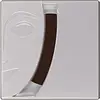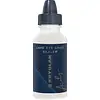What's inside
What's inside
 Key Ingredients
Key Ingredients

No key ingredients
 Benefits
Benefits

 Concerns
Concerns

 Ingredients Side-by-side
Ingredients Side-by-side

Talc
AbrasiveKaolin
AbrasivePvp
Emulsion StabilisingWater
Skin ConditioningPropylene Glycol
HumectantOctyldodecanol
EmollientHydrogenated Polyisobutene
EmollientGlyceryl Stearate
EmollientLaneth-40
CleansingRicinus Communis Seed Oil
MaskingCetearyl Alcohol
EmollientGlyceryl Ricinoleate
EmollientEuphorbia Cerifera Wax
Copernicia Cerifera Wax
Phenoxyethanol
PreservativeSodium Cetearyl Sulfate
CleansingCera Microcristallina
Emulsion StabilisingCera Alba
EmollientCetyl Alcohol
EmollientParaffinum Liquidum
EmollientMethylparaben
PreservativeEthylparaben
PreservativePropylparaben
PreservativeBHT
AntioxidantTocopherol
AntioxidantTitanium Dioxide
Cosmetic ColorantCI 77891
Cosmetic ColorantIron Oxides
CI 77491
Cosmetic ColorantCI 77492
Cosmetic ColorantCI 77499
Cosmetic ColorantUltramarines
CI 77007
Cosmetic ColorantChromium Hydroxide Green
CI 77289
Cosmetic ColorantCI 75470
Cosmetic ColorantCI 77510
Cosmetic ColorantCI 77163
Cosmetic ColorantCI 77266
Cosmetic ColorantCI 77742
Cosmetic ColorantCI 16035
Cosmetic ColorantTalc, Kaolin, Pvp, Water, Propylene Glycol, Octyldodecanol, Hydrogenated Polyisobutene, Glyceryl Stearate, Laneth-40, Ricinus Communis Seed Oil, Cetearyl Alcohol, Glyceryl Ricinoleate, Euphorbia Cerifera Wax, Copernicia Cerifera Wax, Phenoxyethanol, Sodium Cetearyl Sulfate, Cera Microcristallina, Cera Alba, Cetyl Alcohol, Paraffinum Liquidum, Methylparaben, Ethylparaben, Propylparaben, BHT, Tocopherol, Titanium Dioxide, CI 77891, Iron Oxides, CI 77491, CI 77492, CI 77499, Ultramarines, CI 77007, Chromium Hydroxide Green, CI 77289, CI 75470, CI 77510, CI 77163, CI 77266, CI 77742, CI 16035
Ingredients Explained
These ingredients are found in both products.
Ingredients higher up in an ingredient list are typically present in a larger amount.
Ethylparaben is a preservative, is a paraben, and is not reef safe.
Methylparaben is a preservative and is a paraben. It is used to prevent the growth of fungus, mold, and other harmful bacteria. Parabens are chemicals used as preservatives in both cosmetics and food.
Methylparaben can be synthetically created. It can also be found naturally in some fruits, such as blueberries.
Oftentimes, Methylparaben is combined with other parabens to help increase the shelf life.
The safety of Methylparaben is currently being studied. While ongoing studies are looking into the safety of parabens, the results have been very mixed. Some studies have not found Methylparaben to be harmful.
Learn more about MethylparabenPhenoxyethanol is a preservative that has germicide, antimicrobial, and aromatic properties. Studies show that phenoxyethanol can prevent microbial growth. By itself, it has a scent that is similar to that of a rose.
It's often used in formulations along with Caprylyl Glycol to preserve the shelf life of products.
Propylene Glycol is an odorless, colorless liquid. As a humectant, it helps skin retain moisture. It also aids in delivering active ingredients.
Another role of this ingredient is preventing a product from melting or freezing. Propylene glycol also adds antimicrobrial properties to a product, elongating product lifespan.
This ingredient is considered an organic alcohol and commonly added into both cosmetics and foods.
Those with sensitive skin or conditions may develop a rash when using this ingredient.
Learn more about Propylene GlycolPropylparaben is a preservative and is a paraben with antifungal and antimicrobial properties.
This ingredient can be naturally found in plants and insects, but most of it is synthetically manufactured for human use. In cosmetics, it is usually created by reacting para-aminobenzoic acid and propanol (an alcohol).
You can usually find this ingredient in water-based products.
Parabens have come under controversy due to the claim they are hormone disruptors. Studies show conflicting results. We recommend speaking with a professional if you have any concerns.
Propylparaben is commonly found in food, medicine, and cosmetics.
Learn more about PropylparabenWater. It's the most common cosmetic ingredient of all. You'll usually see it at the top of ingredient lists, meaning that it makes up the largest part of the product.
So why is it so popular? Water most often acts as a solvent - this means that it helps dissolve other ingredients into the formulation.
You'll also recognize water as that liquid we all need to stay alive. If you see this, drink a glass of water. Stay hydrated!
Learn more about Water